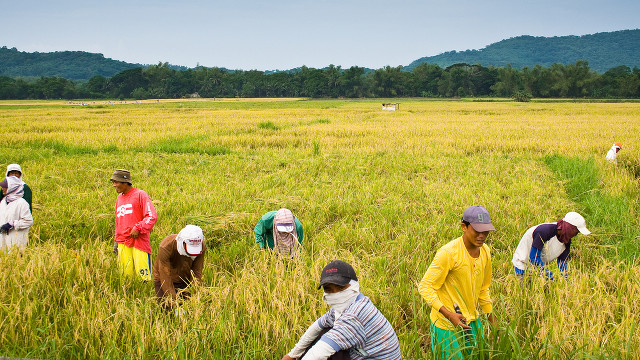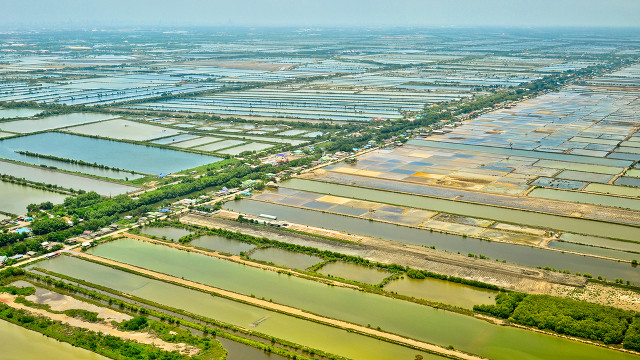SUMMARY
This is AI generated summarization, which may have errors. For context, always refer to the full article.

MANILA, Philippines – “At this point in time, we cannot say that we are ready for the ASEAN Economic Community,” said Agriculture Secretary Proceso Alcala at the department’s budget hearing last September 9.
He was responding to concerns of Senators Franklin Drilon, JV Ejercito and Bam Aquino about the country’s readiness for the planned economic integration of ASEAN member countries by 2015.
The AEC aims to create a single market and production base with free movement of goods, services, investment, labor and capital among the 10 member nations, namely, the Philippines, Thailand, Malaysia, Indonesia, Cambodia, Singapore, Vietnam, Myanmar, Laos and Brunei.
The Philippines currently exports rice, corn, coconut, banana, pineapple, sugarcane and some vegetable crops. In 2012, agriculture and fisheries made up 11.5% of the gross domestic product and employed 32.2% of Filipinos or around 12.1 million people.
But there is growing fear that Philippine raw materials and products will not be able to compete with the products of our Southeast Asian neighbors which benefit from advanced farming technology and generous government support. Opening up the economy in 2015 may only put Filipino farmers at a disadvantage, forced to compete against products with lower prices.
Race for rice
For instance, the cost of production for one kilo of unmilled rice or palay in Thailand is only P8 compared to the cost of production in the Philippines–around P11 per kilo.
Thailand’s low cost of production allows farmers to sell their rice at competitively low prices.
There are two reasons for Thailand’s low production cost, explained National Rice Program Coordinator Dante Delima.
“First, they have basic infrastructure and facilities in place for irrigation and drying of unmilled rice. Second, their fertilizer is cheap because they have their own production of fertilizer. Aside from that, the intervention of their government is very big in terms of subsidies.”

But Philippine rice has a chance.
Based on a DA assessment last July, the cost of production for rice in areas where there is complete infrastructure matches or beats Thai figures.
In Zaragoza, Nueva Ecija where rice production is the backbone of the local economy, the cost of production is at P7.85. In parts of Iloilo where much private sector investment has gone to efficient irrigation systems, the cost of production is P8.80.
The biggest challenge for DA in beating down the cost of producing rice is Mindanao where cost of production is still around P11.
Drilon called irrigation a “game changer” in giving Philippine rice a fighting chance when the country’s economy is opened up to AEC.
Cultivated rice is extremely sensitive to water shortages, according to the International Rice Research Institute. Irrigation is essential for proper water management, ensuring good quality of rice and a bountiful harvest.
The agriculture department allotted P22 billion for 2014 irrigation projects to boost the competitiveness of Filipino rice farmers. This is almost 28% of the total 2014 budget of the department which is P79.155 billion.
A total of P21 billion of this will be given to local government units tasked with implementing the projects, while P1 billion will go to the government-owned and controlled corporation National Irrigation Administration.
Bounty in biofuel
Aside from providing more infrastructure and facilities for agriculture, Alcala said the DA’s preparations for AEC include matching the country’s agricultural practices with international standards.
“The rules and regulations to be followed when we open up to AEC, we are preparing because this is the only way we can protect our farmers and our production. In terms of sanitation and micro-sanitation regulations, we can hold up against products that will come in from other countries,” said the Secretary.
Increased investment in bioethanol is another measure being undertaken by the DA to prepare for AEC.
Bioethanol is used as a substitute for petroleum used to fuel vehicles. A form of renewable energy, it can be produced from crops like sugarcane, potato and corn. A major benefit of bioethanol is fuel security since it comes from a renewable resource instead of a finite resource such as fossil fuels, allowing countries to be less reliant on oil-producing countries.
It also reduces greenhouse gas emissions and is easy to integrate into existing road transport fuel systems. Up to 5% of bioethanol can be blended with conventional fuel without the need for engine modifications.
The United States and Brazil have taken the lead in ethanol fuel production, producing 73.7 billion liters in 2011. ASEAN neighbor Thailand has also jumped in.
Thriving bioethanol production in the Philippines can serve as an alternative–and potentially more lucrative–source of income for sugarcane farmers. Two bioethanol plants are already operational while 3 more are under construction, said Alcala.
For other crops, the DA has started making the necessary preparations to ensure regional and global competitiveness. According to Alcala, among the Philippines’ strongest sectors are the banana, pineapple, mango and coconut industries. – Rappler.com
Rice harvest in the Philippines image from Shutterstock
Rice field terraces in Thailand image from Shutterstock
Add a comment
How does this make you feel?
There are no comments yet. Add your comment to start the conversation.